Having settled in to Dover and had a crash course on its history, my next move was naturally to take a walk along the famed white cliffs, an experience to be found on many a bucket list.
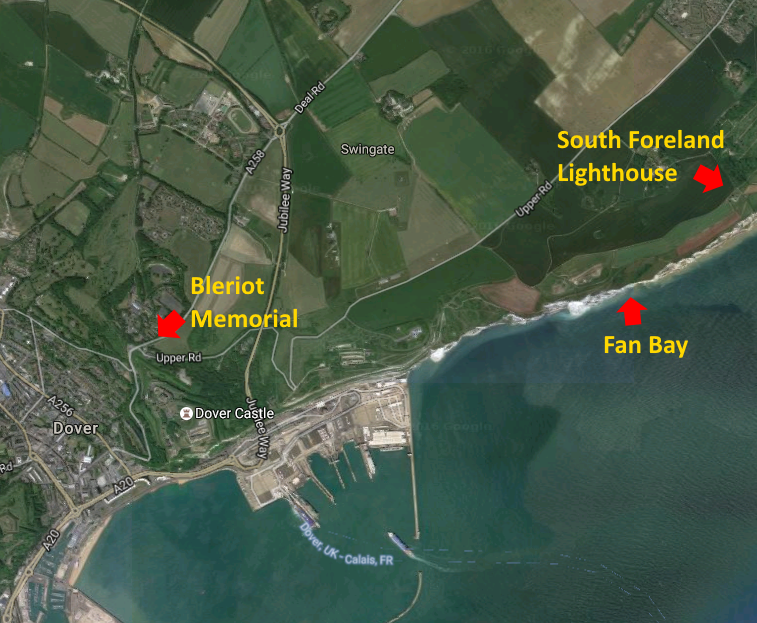
Lucky for me, one of my new-found English cousins is just as keen on long walks as I am, so I had a guide for today’s adventure. Cousin Andy led me through Connaught Park with its goldfish-filled pond and past the imposing Dover Castle, which I eyed up with interest.
As we wandered, we came across the granite imprint of a small aircraft in the ground, marking the spot in which aviator and inventor Louis Blériot landed in 1909 after completing the first flight across the English Channel. To someone like me who has circumnavigated the globe aboard various airlines, this might not sound like a big achievement – but considering in 1907 he struggled to fly as far as 25m in one of his planes, the 33km flight across the channel was a great and dangerous feat. For his trouble he won the £1000 bounty placed by the Daily Mail, eternal fame, and a whole lot of publicity for his aeroplane manufacturing business.

We passed by the National Trust Visitor Centre, stopping to check out the sign which pointed out some of the interesting things we could expect to see along our way. It is important to graze chalk grassland such as that of the white cliffs, to prevent it from becoming overcome by scrub and to encourage delicate grassland flowers instead. Up here they employ Exmoor ponies for that purpose, which I was fairly excited to encounter. Other things to look out for were the Adonis blue butterfly, the viper’s bugloss flower, the perigrine falcon and the pyramidal orchid. Now this is my kind of scavenger hunt!
Oh hey, I’ve already found one of them!
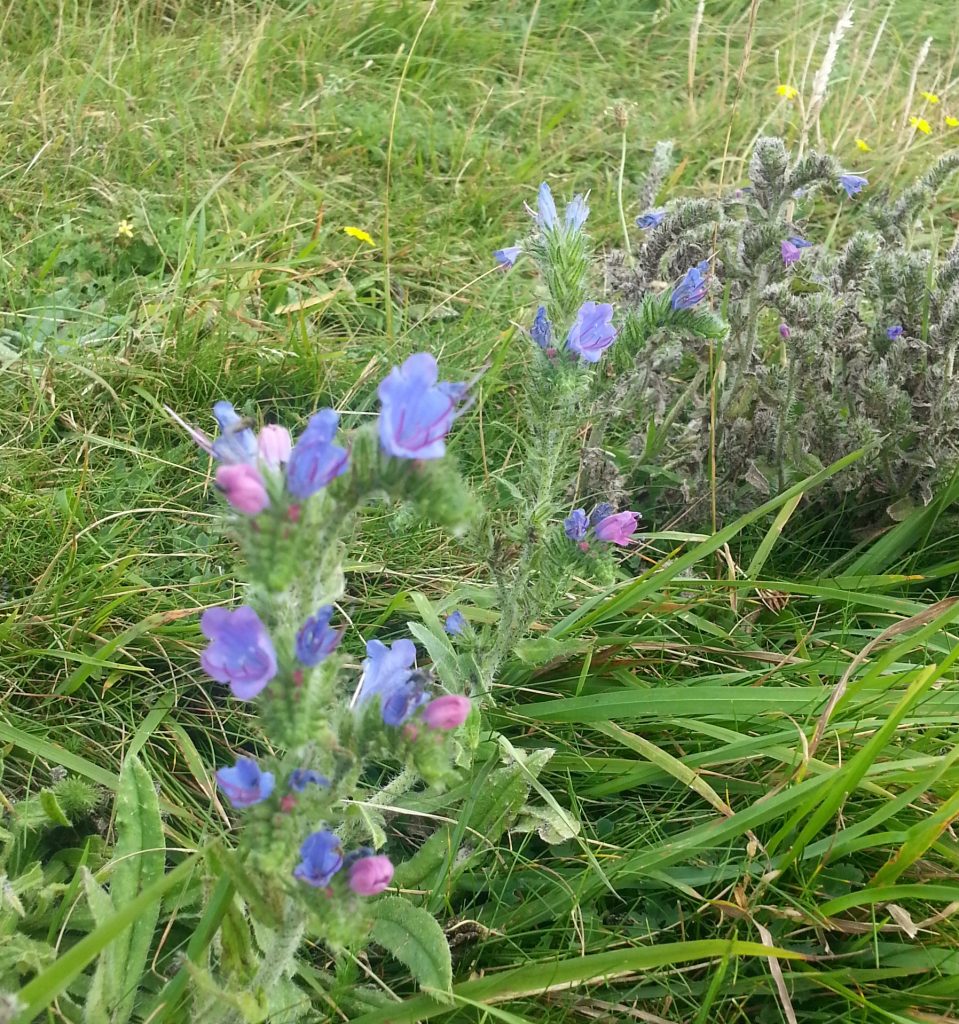
Patting ourselves on the back, we continued on to our first view of the famous white cliffs. Well, my first view of them anyway. The day was warm but clouds scudded across the sky, creating complex patterns of light and dark over the cliff-top plateau and the ocean below. Across the channel, the hazy silhouette of France was faintly visible in the distance.
And, as promised by many a song and tale, the great cliffs were white…strikingly so.

Squinting down into Langdon Bay it was just possible to make out the wreck of the SS Falcon rusting away at the base of the cliff. In 1926, this ill-fated steamship was carrying a cargo of hemp and matches when it caught fire (I’d like to assume because someone lit a blunt?) and ran aground. Apparently it was once possible to get down to the wreck site, but unfortunately that access is now closed so I have to be content with this distant view.
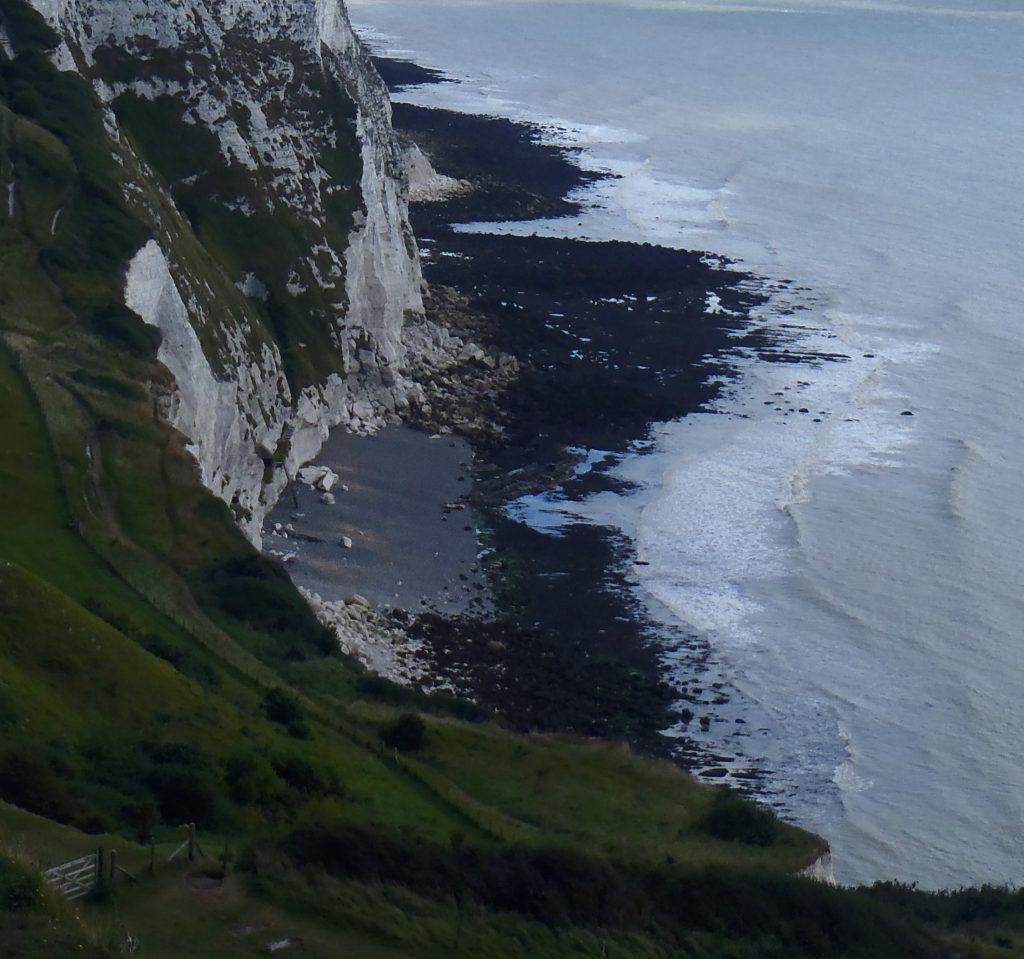
The path, white against the grass, led us along the cliff tops. There were no barriers, allowing us to sidle as close to the edge as we dared (though it is a good idea not to get too close, as chalk is not the most sturdy thing to have underfoot).
As we wandered, I couldn’t help but look at the fields ahead and wonder if this is the kind of country that Terry Pratchett wrote about in his Tiffany Aching series – although I suppose Tiffany was a lot further from the sea.
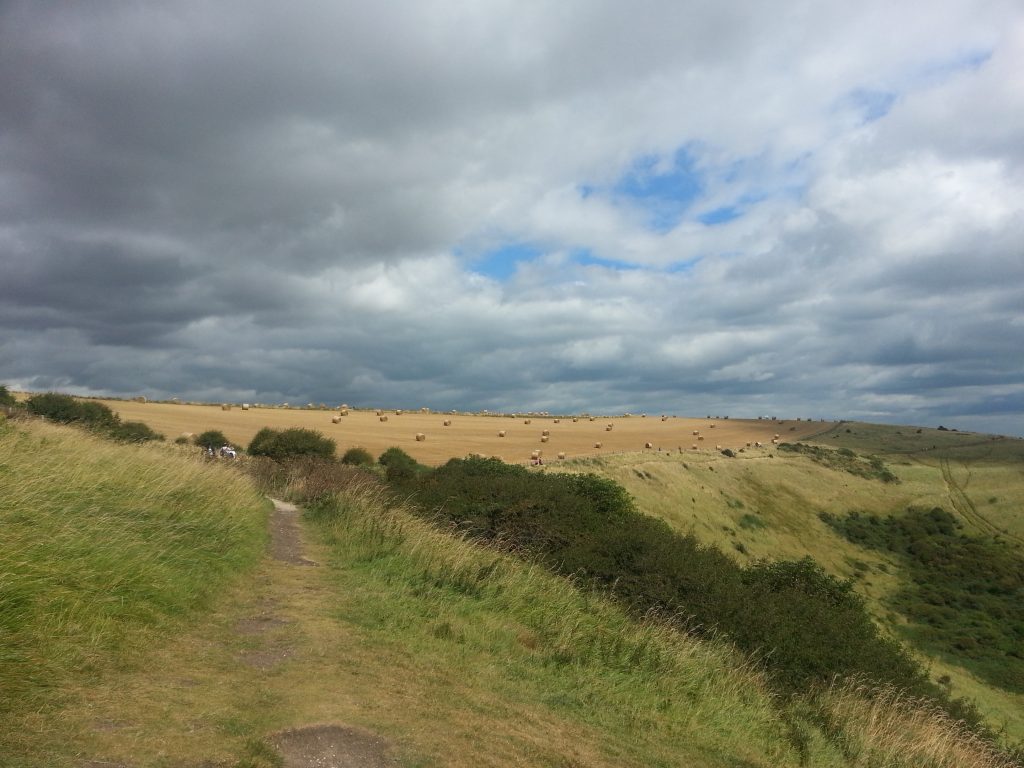
Up close to the cliffs it was possible to see that the white was speckled with rows of black flint chunks. I had noticed that these stones have been incorporated into several walls and buildings back in town.
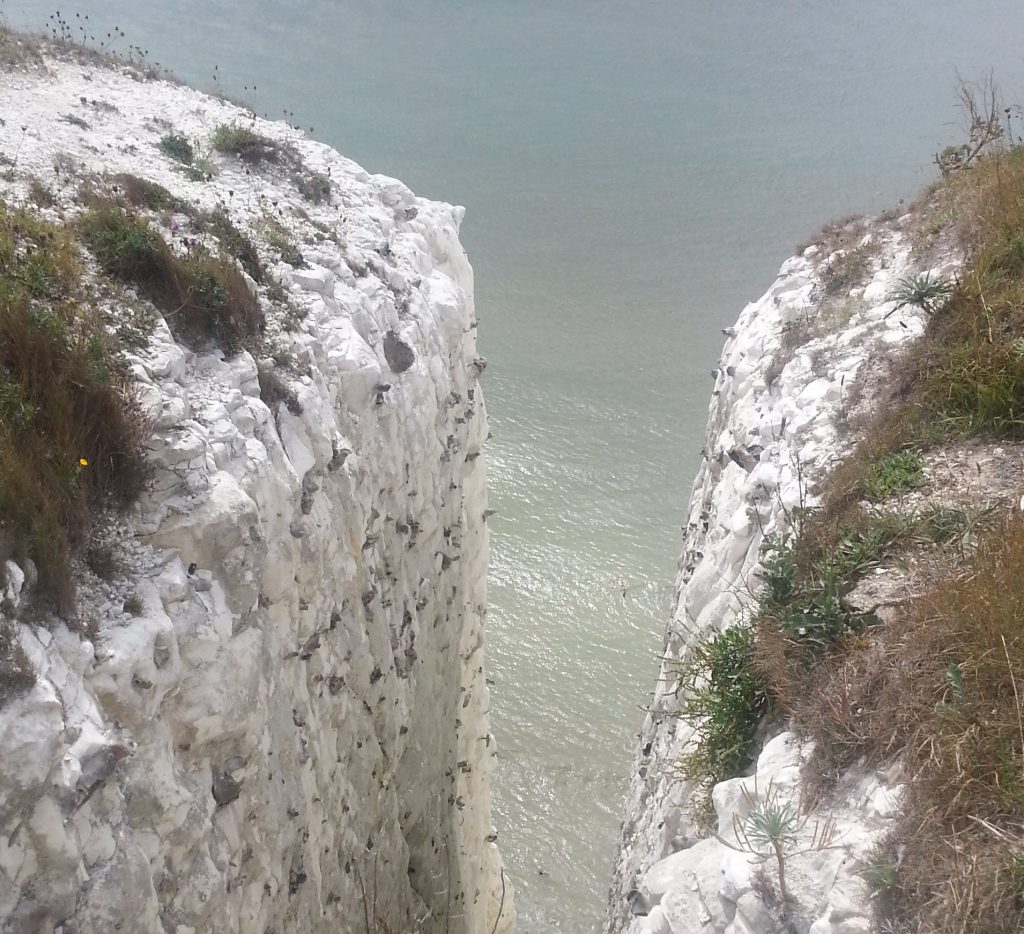
Soon the clean white tower of the South Foreland Lighthouse appeared on the heights ahead of us. The current building dates from 1846 but there has been a light of some form here since the 10th century. The reason is the infamous Goodwin Sands in the channel below, a shifting field of sand that is said to have claimed more than 2000 ships. The treacherous sands have been mentioned in sources as varied as Shakespeare and Moby Dick.
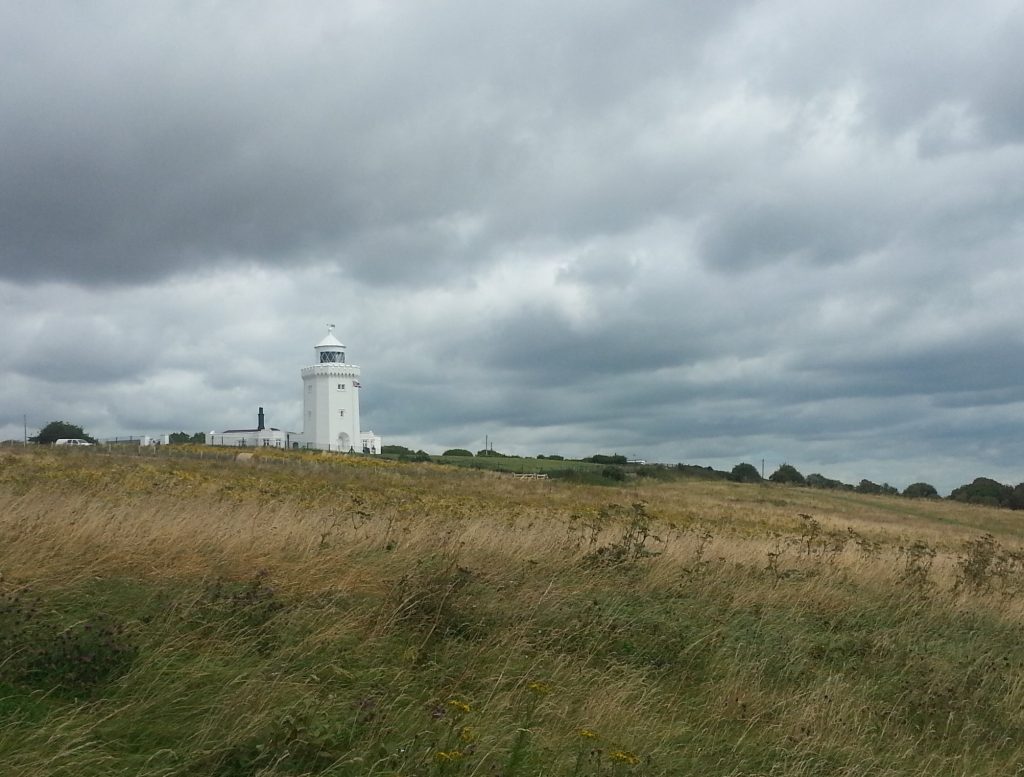
The lighthouse was decommissioned in 1988, replaced by buoys and such below, and now houses a museum and (more importantly for our purposes) Mrs Knott’s Tea Room.
Andy offered to shout me to a “Kentish cream tea” and I readily accepted, despite having no clue what that involved. I imagined a kind of tea with cream mixed in? We were provided a fine china tea set from a shelf of many and took a table in the tea room, which with its patterned wallpaper looked like a typical nana’s lounge.
The cream tea turned out to be a pot of perfectly normal tea, served with scones, clotted cream and jam – a tradition so English that there has even been talk of obtaining geographical protected status for it.

I don’t think I’ve had scones since my grandma – who used to make them often – passed away, so this was a bitter-sweet tea-time for me.
We finished up our refreshments and headed back out into the open. Shortly after beginning our walk back, I spotted the second item in our white cliffs scavenger hunt. Or at least I think I did – apparently there are two fairly similar butterfly species and I’m not sure if I found the right one.

We decided on our way back to detour down into the natural amphitheatre of Fan Bay, where two First World War sound mirrors are located. This bay is also the location of a WWII-era underground complex built at the behest of Winston Churchill who was outraged to see enemy ships moving freely in the Channel.
Both were buried as eyesores in the 1970s and only rediscovered and excavated in the past few years. It is now possible to tour the tunnels for a price, but we settled only for examining the sound mirrors, installed to focus the sound of approaching enemy aircraft so that the defenders could be forewarned, even in conditions of poor visibility. Crossing the Channel by aircraft may have been a wondrous cause for celebration back in 1907 but by 1917 (when the first of these two was built, one of the oldest surviving sound mirrors in England) it was instead something to be extremely concerned about. Such is the way of progress.
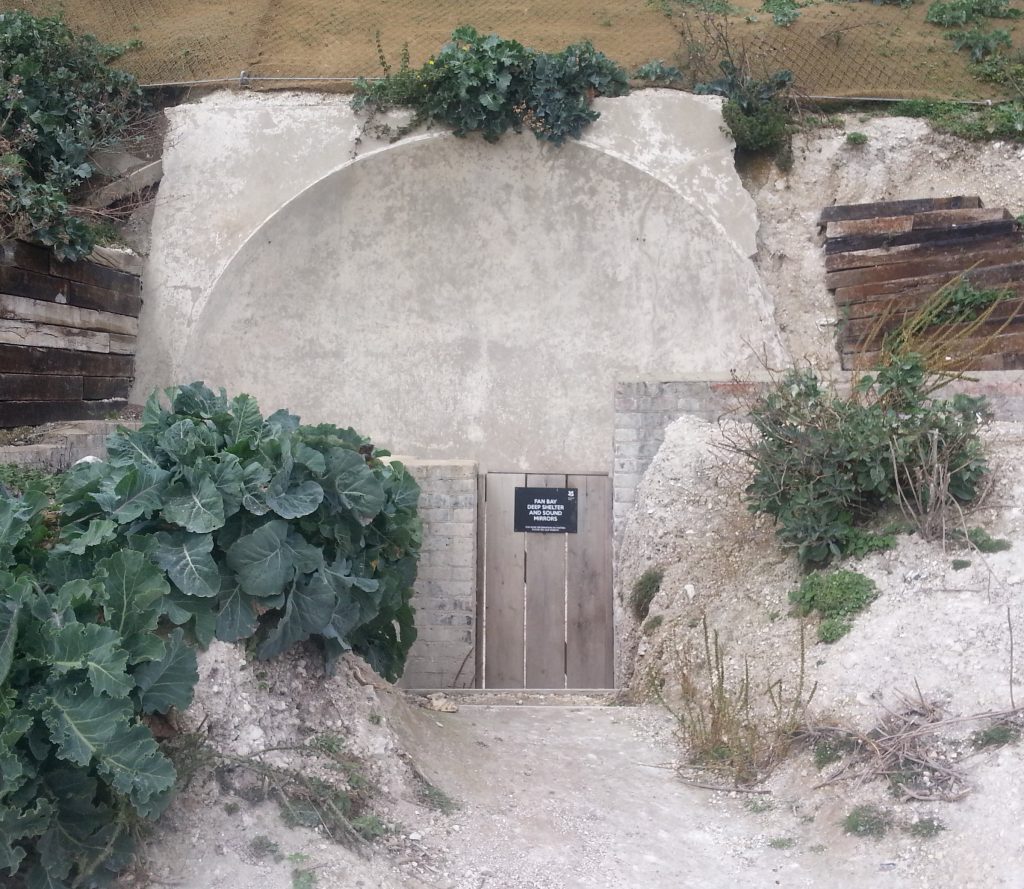
The somewhat familiar-looking plants surrounding the mirror are wild cabbage, which through a slow process of genetic engineering selective breeding is the ancestor of our modern cabbage, broccoli, kale and brussels sprouts.
We huffed and puffed up the far side of the Fan Bay depression and continued back towards Dover, admiring the view of the busy harbour as it slowly emerged from behind the cliffs.

As we neared our starting point Andy spotted another item from our scavenger hunt – the peregrine falcon! It watched us from atop a wind-swept shrub, only flying off when we drew even with it.
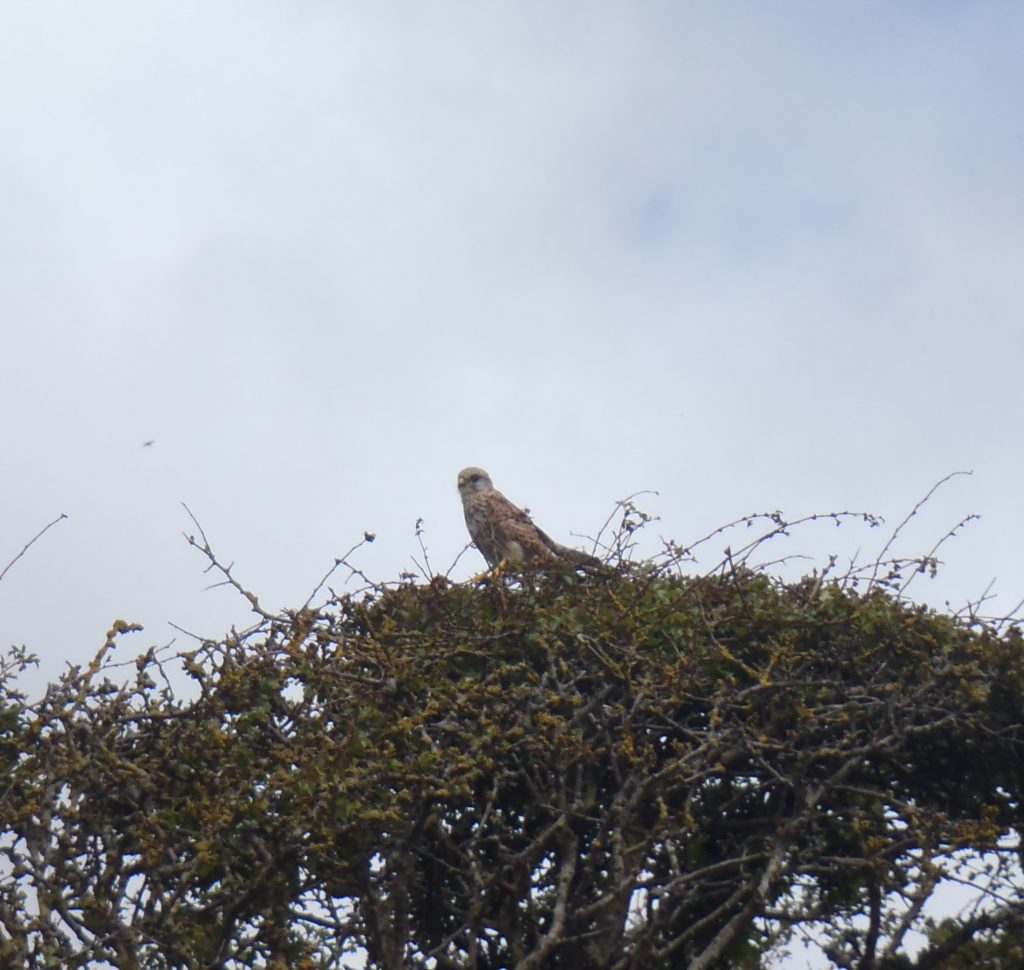
Sadly we’d seen neither ponies nor orchids on our journey, but that just means we’ll have to come back for them another day! Our only stop on our way home was at The Old Endeavour Pub for a bevvie, and so I could enjoy sitting under the Southern Cross for the first time in over a month!
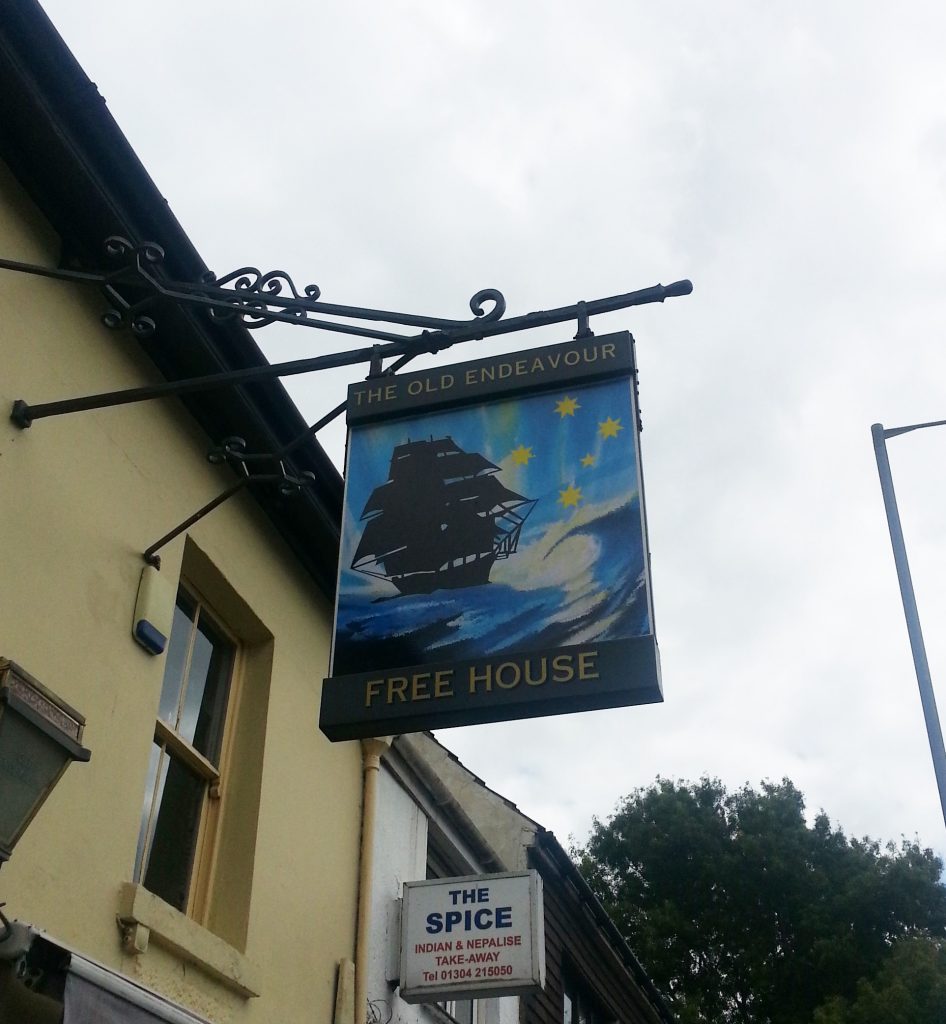
So I’ve marked off Dover’s most famous attraction, but I’m hardly done yet. There’s a lot more to explore while I’m here!
References:
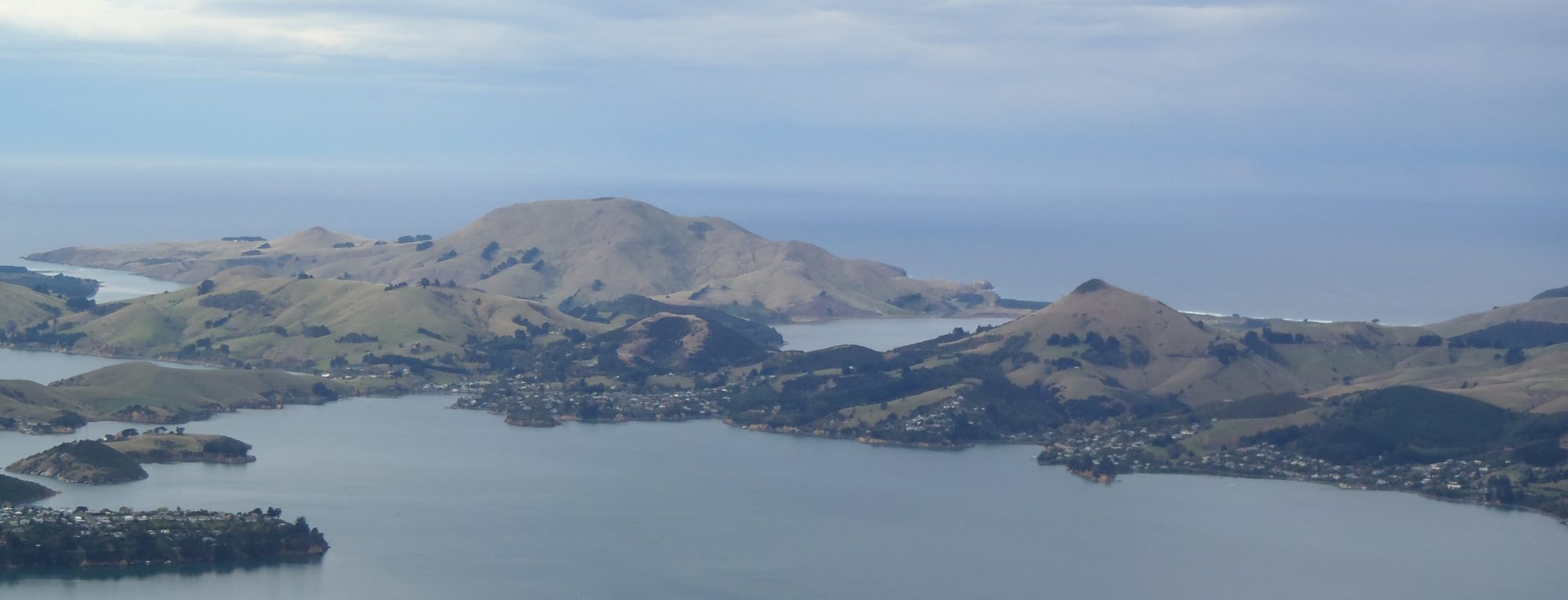
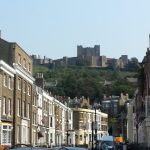


I saw a picture of a red and white striped lighthouse at sea level in front of the white cliffs….did you see or know about where it is?
Great yarn as ever…pity about missing the Horses
Looks like that is at Beachy Head which is in Sussex to the west. Maybe I’ll visit it sometime!
Great job, spotting the peregrine falcon.